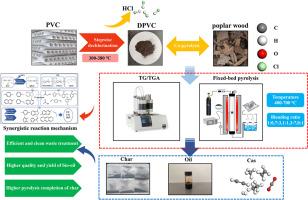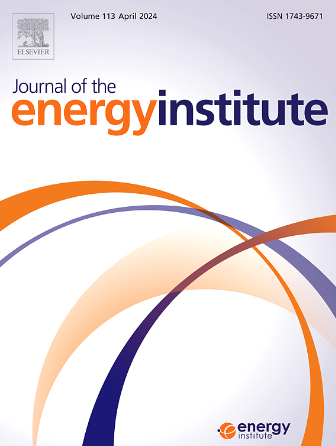Stepwise dechlorination and co-pyrolysis of poplar wood with dechlorinated polyvinyl chloride: Synergistic effect and products distribution
Abstract
With the combination of stepwise dechlorination and co-pyrolysis techniques, this study conducted polyvinyl chloride (PVC) dechlorination experiments and co-pyrolysis experiments of poplar wood (PW) with dechlorinated polyvinyl chloride (DPVC) by thermogravimetric analysis and a fixed bed reactor. Stepwise pyrolysis effectively removed Cl from PVC with a dechlorination efficiency of 99.84 % at 360 °C for 30 min. Thermogravimetric tests and thermokinetic variables were employed to describe the co-pyrolysis process's thermodynamic behavior, where co-pyrolysis significantly diminished the activation energy of the initial pyrolysis stage (9.65–21.62 kJ/mol) and increased the reaction rate (0.02–0.09 %/°C). The synergistic effect of co-pyrolysis enhanced the yield and quality of liquid oil and reduced the solid residue rate, with the maximum change in solid residue rate (−2.36 wt%) occurring at PW:DPVC = 3:7. The optimal conditions for the synergistic effect are a raw material ratio of 3:7 at 500 °C. Co-pyrolysis efficiently reduced the content of oxygen-containing compounds of phenols, ketones, and acids in oil, and elevated the selectivity of aromatics. The research methods avoid the drawbacks of bio-oil and plastic oil and improve the quality of pyrolysis oil in a concise and efficient manner, which provides some new ideas for the resource and clean utilization of municipal waste.


 求助内容:
求助内容: 应助结果提醒方式:
应助结果提醒方式:


